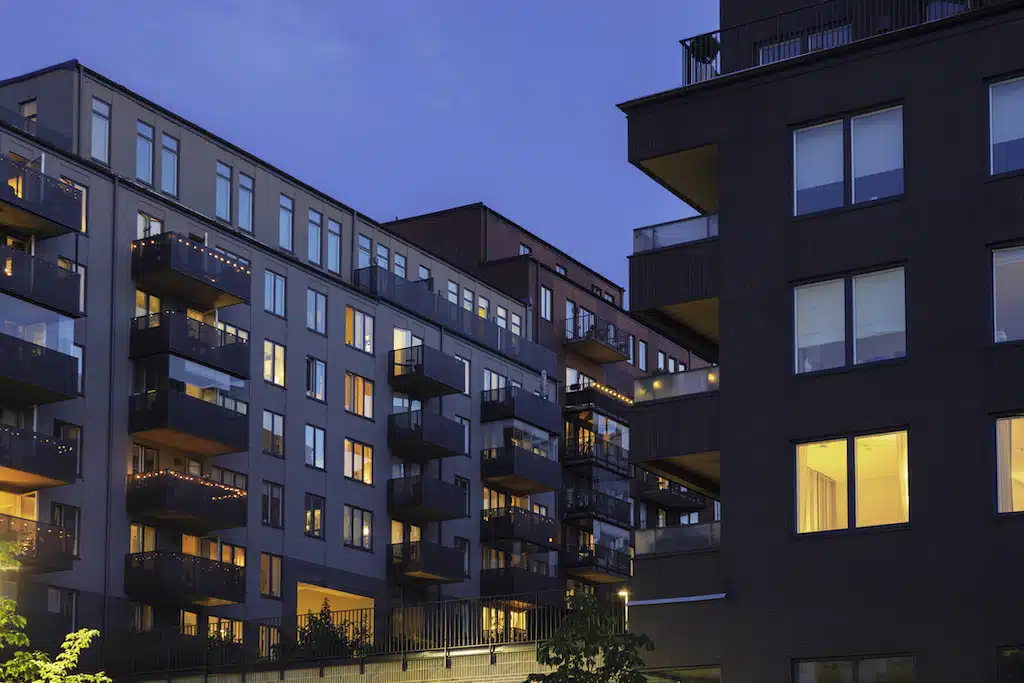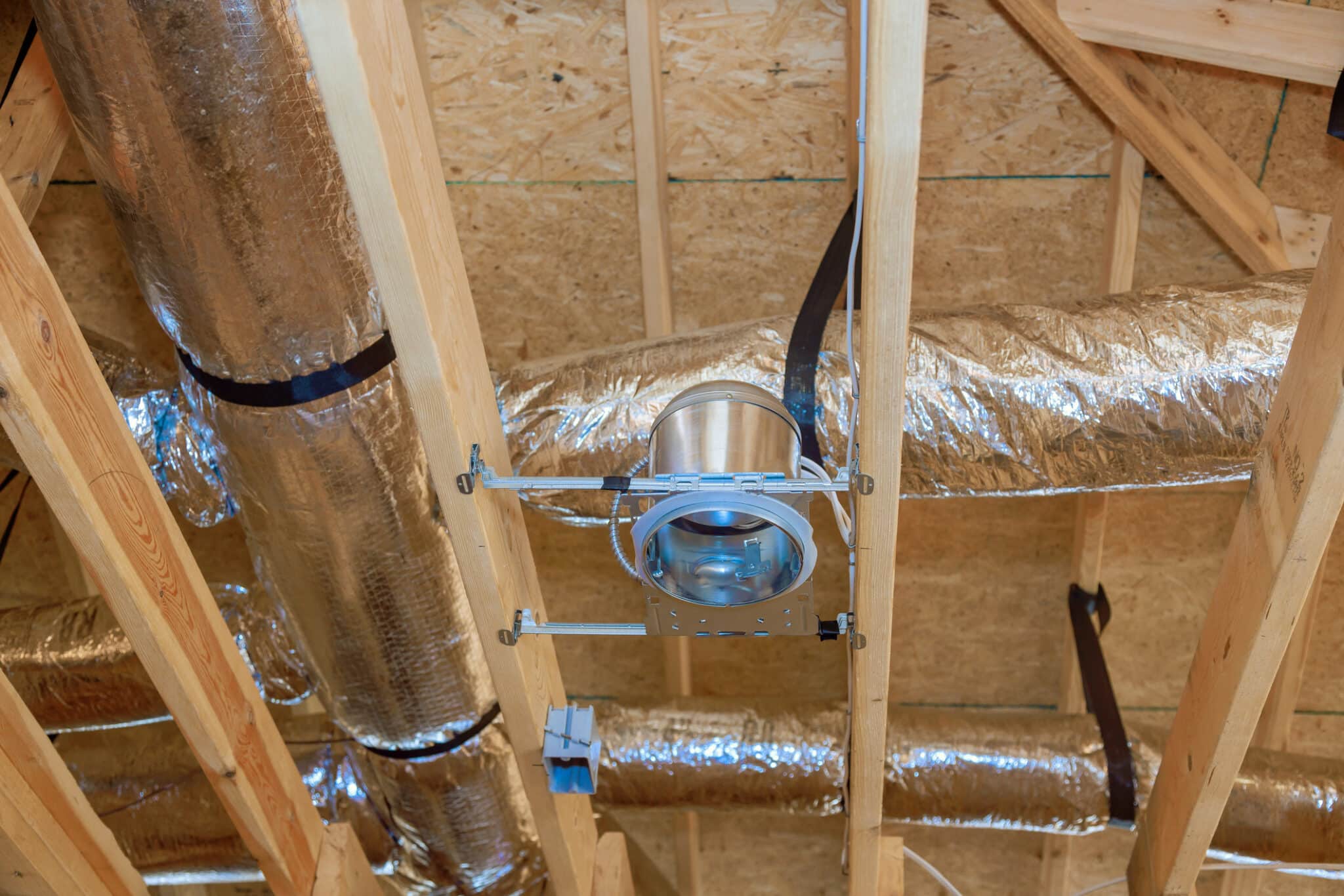
The Impact of Dallas’ Urban Sprawl on HVAC Systems
- Urban sprawl in Dallas has significantly impacted HVAC systems, increasing challenges for homeowners and service providers.
- Rising demand for HVAC services is evident in sprawling suburbs, where larger homes require more energy for heating and cooling.
- The urban heat island effect intensifies HVAC loads, leading to higher energy consumption and increased utility bills.
- Maintaining and retrofitting HVAC systems in sprawling areas is more complex and costly, adding to homeowners’ financial burdens.
- Homeowners are encouraged to consider energy-efficient upgrades and regular maintenance to mitigate the economic and environmental impacts of urban sprawl on their HVAC systems.
What makes urban sprawl in Dallas unique?
As one of the fastest-growing metropolitan areas in the United States, Dallas has witnessed significant changes in its landscape over the past few decades. Urban sprawl, characterized by the rapid expansion of low-density residential areas and increased reliance on automobiles, has become a defining feature of this growth.
Urban sprawl refers to the uncontrolled expansion of urban areas into the surrounding countryside. In Dallas, this phenomenon is marked by sprawling suburbs, wide roadways, and a dependence on personal vehicles for transportation. Unlike compact cities, where development is concentrated, Dallas’ growth has been outward, leading to the spread of residential neighborhoods and commercial zones far from the city center.
The rapid expansion of Dallas presents unique challenges and opportunities for residents, businesses, and policymakers. As we delve deeper into the impacts of this sprawl on HVAC systems, it becomes clear that the city’s growth trajectory has significant implications for energy consumption, environmental sustainability, and urban planning.
How Urban Sprawl Affects HVAC Systems
Have you ever considered how the sprawling growth of Dallas might impact your HVAC system?
As urban sprawl extends the city’s boundaries, the demand for HVAC services rises, and the challenges faced by both service providers and homeowners multiply.

Increased Demand for HVAC Services
As Dallas expands, so does the need for reliable heating, ventilation, and air conditioning. Suburban developments, often located far from the city center, require HVAC systems to maintain comfortable indoor environments. The sheer number of new homes and businesses popping up across the city means that HVAC service providers must scale their operations to meet this growing demand.
This surge in demand also drives up the cost of installation, maintenance, and repair services, making it more challenging for homeowners to manage their HVAC needs efficiently.
Expansion of Service Areas
With the growth of suburban neighborhoods, HVAC companies are faced with the challenge of covering larger service areas. Previously, service providers could focus on a centralized urban core, but now they must extend their reach to accommodate customers scattered across vast suburban landscapes.
This expansion leads to longer travel times for technicians, higher operational costs, and potentially delayed service for homeowners in need of urgent repairs. The dispersed nature of urban sprawl complicates logistics, making it essential for HVAC companies to optimize their routes and resources to maintain high service standards.
As Dallas continues to grow outward, the pressures on HVAC systems and service providers will only intensify. Understanding these impacts is crucial for homeowners and businesses alike, as they navigate the complexities of maintaining comfort in an ever-expanding city.
Urban Heat Island Effect and Its Impact on HVAC Systems
Did you know that urban sprawl can make your HVAC system work harder?
The urban heat island (UHI) effect, a phenomenon where developed areas become significantly warmer than their rural surroundings, plays a major role in this.
Explanation of the Urban Heat Island Effect
The UHI effect occurs when natural landscapes are replaced with concrete, asphalt, and buildings, which absorb and retain heat. In sprawling cities like Dallas, this effect is amplified by the extensive development of suburban areas. These materials store heat during the day and release it slowly at night, causing higher temperatures compared to nearby rural areas.
This temperature difference can be as much as 10 degrees Fahrenheit or more, especially during the summer months. As Dallas continues to expand, more land is covered by heat-retaining surfaces, exacerbating the UHI effect.
How It Intensifies HVAC Load in Sprawling Areas
The UHI effect directly impacts HVAC systems by increasing the cooling load. In areas affected by UHI, HVAC systems must work harder and longer to maintain comfortable indoor temperatures, especially during peak summer months. This increased workload not only leads to higher energy consumption but also shortens the lifespan of HVAC units due to the extra strain. Homeowners in sprawling suburban areas may notice that their energy bills are significantly higher than those living in more rural or less developed areas.
Furthermore, the UHI effect can contribute to a vicious cycle: as HVAC systems work harder and consume more energy, they release more heat into the environment, further intensifying the UHI effect. This cycle underscores the need for energy-efficient HVAC solutions and strategic urban planning to mitigate the impact of urban sprawl on both the environment and household budgets.
Energy Consumption and Efficiency Challenges
Is your energy bill higher than expected? The urban sprawl in Dallas might be to blame. As the city expands, energy consumption, particularly for HVAC systems, becomes a significant concern for homeowners.
Rising Energy Needs in Sprawling Suburbs
As Dallas’ suburbs spread out, larger homes and more expansive neighborhoods became the norm. These sprawling residential areas often feature bigger houses, which naturally require more energy to heat and cool. The increase in square footage means that HVAC systems must operate more frequently and for longer periods to maintain a comfortable indoor climate.
In addition, the longer distance between homes and commercial areas can lead to more reliance on individual HVAC units rather than shared or centralized systems, further driving up energy usage.
This increased energy demand not only leads to higher utility bills for homeowners but also places a greater strain on the local power grid. During peak seasons, when everyone’s air conditioning is running at full capacity, the risk of power outages or brownouts can rise, particularly in less developed suburban areas.
Efficiency Concerns in Larger, Spread-Out Homes
The design of many suburban homes in Dallas does not always prioritize energy efficiency. Large windows, high ceilings, and expansive open floor plans can be aesthetically pleasing but may not be the most efficient when it comes to maintaining temperature. As a result, HVAC systems in these homes often work harder than those in more compact, energy-efficient buildings.
In addition to the design challenges, the spread-out nature of suburban areas makes it more difficult to implement energy-saving technologies, such as zoned heating and cooling systems or smart thermostats that can optimize energy use. These inefficiencies can lead to wasted energy, higher costs, and increased wear and tear on HVAC systems, making it essential for homeowners to consider energy-efficient upgrades and maintenance practices.
As Dallas continues to sprawl, addressing these energy consumption and efficiency challenges will be crucial for reducing both environmental impact and household expenses.
Impact on HVAC System Design and Installation
How does urban sprawl affect the design and installation of HVAC systems in Dallas? As the city grows outward, HVAC professionals face new challenges that require innovative solutions.
Design Modifications for Sprawling Urban Areas
Urban sprawl in Dallas has led to the development of larger homes and commercial spaces, often spread across vast areas. This change requires HVAC systems that can efficiently handle the unique demands of these environments.
For instance, in sprawling homes, HVAC systems may need to incorporate zoning technology, which allows different areas of the house to be heated or cooled independently. This approach not only enhances comfort but also reduces energy waste by preventing the entire home from being conditioned to the same temperature.
Additionally, HVAC systems in these areas often require more powerful units to ensure that the farthest reaches of the home or building are adequately heated or cooled. This necessity can lead to increased installation costs and a greater focus on ensuring that ductwork and airflow are optimized for larger, more complex layouts.
Challenges in Retrofitting Existing Systems
As urban sprawl encourages the development of new suburbs, older homes in previously established neighborhoods may struggle to keep up with modern HVAC demands. Retrofitting these homes with updated HVAC systems poses significant challenges. For example, older homes often have limited space for the installation of larger or more efficient units. The existing ductwork might not be compatible with modern systems, requiring extensive modifications.
In sprawling areas where homes are built in phases or as part of larger developments, retrofitting can be complicated by the need to maintain consistent heating and cooling across various property types. Moreover, as these areas continue to grow, homeowners may find that their HVAC systems need frequent upgrades to keep pace with changing demands, further increasing long-term costs.
urban sprawl in Dallas necessitates thoughtful HVAC system design and installation strategies to ensure comfort and efficiency across an ever-expanding landscape.
Influence of Building Types and Density on HVAC Performance
How does the type of building and neighborhood density affect your HVAC system? The design and performance of HVAC systems can vary greatly depending on whether you live in a densely packed urban area or a sprawling suburban neighborhood.
Comparison of HVAC Performance in High-Density vs. Low-Density Areas
In high-density urban areas of Dallas, buildings are often closer together, and many share walls, ceilings, or floors. This proximity allows for more efficient heating and cooling because less energy is required to maintain a consistent indoor temperature. Shared HVAC systems, such as those found in apartment complexes or connected townhomes, can operate more efficiently by serving multiple units simultaneously. The result is lower energy consumption per household and reduced overall strain on the HVAC system.
Conversely, in low-density suburban areas, homes are typically spread out and larger, with more exposed surfaces that interact with the external environment. These homes lose and gain heat more quickly, requiring HVAC systems to work harder to maintain comfortable temperatures. The increased distance between homes also reduces the potential for shared energy efficiency, meaning each home must rely on its HVAC system. This situation often leads to higher energy usage and increased wear on individual units.
Specific Challenges in Low-Density Residential Areas
In suburban Dallas, the low-density nature of neighborhoods presents unique challenges for HVAC performance. Larger homes with multiple stories and open floor plans can create issues with air distribution, leading to uneven heating and cooling throughout the house. Rooms that are farther from the HVAC unit or located on the upper floors may struggle to reach the desired temperature, causing discomfort and inefficiency.
Furthermore, the larger lot sizes in suburban areas often mean that homes are more exposed to external weather conditions, such as wind and sun. This exposure can lead to increased temperature fluctuations inside the home, further complicating the task of maintaining a stable indoor climate. HVAC systems in these environments must be carefully designed and maintained to ensure they can cope with these challenges, often requiring more advanced or customized solutions.
Understanding how building type and neighborhood density influence HVAC performance is essential for homeowners looking to optimize their systems for efficiency and comfort.
HVAC Maintenance Challenges in Sprawling Suburbs
How does living in a sprawling suburb impact the maintenance of your HVAC system? As Dallas continues to expand, homeowners in these growing areas face unique challenges when it comes to keeping their HVAC systems in top condition.
Accessibility Issues for Maintenance Teams
In sprawling suburban areas, homes are often situated far from the central parts of the city where most HVAC service providers are based. This distance can lead to delays in service, especially during peak seasons when demand for repairs and maintenance is high. Longer travel times for technicians also increase the cost of service, as many companies factor in the added time and fuel expenses.
For homeowners, this means that scheduling routine maintenance or emergency repairs can be more difficult and expensive.
Furthermore, suburban homes are often larger and more complex in their layout, which can make accessing HVAC systems for maintenance and repairs more challenging. Attics, basements, and large outdoor units may require more time and effort to service, leading to longer appointments and potentially higher labor costs.
Increased Wear and Tear Due to Higher Usage
The design and size of homes in sprawling suburbs can put additional strain on HVAC systems. Larger homes with multiple stories and expansive layouts require HVAC units to work harder to maintain consistent temperatures throughout the space. Over time, this increased workload leads to more wear and tear on the system, resulting in a higher likelihood of breakdowns and a shorter overall lifespan for the equipment.
In areas where the urban heat island effect is pronounced, HVAC systems may run almost continuously during the hottest months, further accelerating the wear and tear. Regular maintenance becomes even more critical under these conditions, but the challenges of accessibility and scheduling in sprawling suburbs can make it harder for homeowners to keep up with necessary upkeep.
Understanding and addressing these maintenance challenges is essential for homeowners in Dallas’ growing suburbs. By planning ahead and working with reliable HVAC service providers, they can ensure their systems remain efficient and effective despite the demands of suburban living.
Economic Implications for Homeowners
How does urban sprawl in Dallas affect your wallet? As the city expands, the economic implications of maintaining HVAC systems in sprawling suburbs are becoming increasingly significant for homeowners.
Rising Costs of HVAC Installation and Maintenance
One of the most immediate economic impacts of urban sprawl is the increased cost of HVAC installation and maintenance. In sprawling suburban areas, homes are typically larger and more complex, requiring more powerful and often more expensive HVAC systems.
The installation of these systems is more involved, with longer ductwork, additional zoning requirements, and often more sophisticated control systems to manage the temperature in different parts of the house.
Maintenance costs are also on the rise. As mentioned earlier, the larger size and complex design of suburban homes put extra strain on HVAC systems, leading to more frequent repairs and replacements. The accessibility challenges in these areas further drive up costs, as service providers may charge more for the longer travel times and the additional labor required to service large or difficult-to-reach systems.
Potential for Increased Utility Bills
In addition to the upfront costs of installation and maintenance, homeowners in sprawling suburbs often face higher utility bills. Larger homes require more energy to heat and cool, especially during extreme weather conditions common in Dallas. The urban heat island effect, coupled with the inefficiencies of older or poorly designed HVAC systems, can lead to significant increases in energy consumption.
For many homeowners, this results in monthly utility bills that are substantially higher than those in more compact, energy-efficient urban homes.
Moreover, as energy demand rises in these growing suburban areas, utility companies may pass on the costs of infrastructure expansion and maintenance to consumers. This can further inflate utility bills, making energy-efficient upgrades and regular HVAC maintenance even more critical for cost-conscious homeowners.
Understanding these economic implications is essential for homeowners in Dallas’ expanding suburbs. By investing in energy-efficient systems and staying on top of maintenance, they can mitigate some of these costs while ensuring their homes remain comfortable year-round.

FAQs
-
How does urban sprawl increase HVAC demand?
Urban sprawl leads to the development of larger, more spread-out homes, which require more extensive and powerful HVAC systems to maintain comfortable temperatures. This growth increases the overall demand for HVAC installation, maintenance, and energy consumption.
-
What are the best HVAC solutions for suburban homes?
For suburban homes, especially those in sprawling areas, energy-efficient HVAC systems with zoning capabilities are ideal. These systems allow homeowners to control the temperature in different areas of the house independently, reducing energy waste and improving comfort.
-
Can sustainable HVAC systems be cost-effective?
Yes, sustainable HVAC systems can be cost-effective in the long run. While the initial investment may be higher, energy-efficient systems reduce utility bills over time and often qualify for tax incentives and rebates, making them a smart financial choice.
-
How does the urban heat island effect impact HVAC systems?
The urban heat island effect causes higher outdoor temperatures in developed areas, which forces HVAC systems to work harder to cool indoor spaces. This increases energy consumption, shortens the lifespan of HVAC units, and raises utility costs for homeowners.
-
What should I consider when maintaining an HVAC system in a sprawling suburb?
In sprawling suburbs, it’s important to schedule regular maintenance to prevent wear and tear, especially since larger homes put more strain on HVAC systems. Also, consider upgrading to more energy-efficient units to reduce long-term costs and improve performance.


